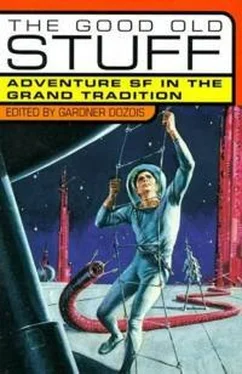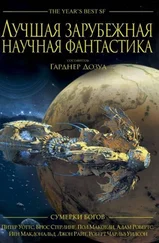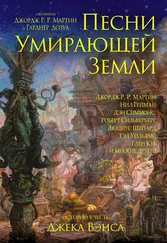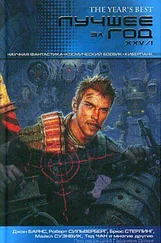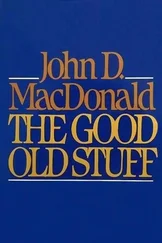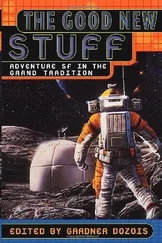Гарднер Дозуа - The Good Old Stuff
Здесь есть возможность читать онлайн «Гарднер Дозуа - The Good Old Stuff» весь текст электронной книги совершенно бесплатно (целиком полную версию без сокращений). В некоторых случаях можно слушать аудио, скачать через торрент в формате fb2 и присутствует краткое содержание. Год выпуска: 1998, ISBN: 1998, Издательство: St. Martin's Griffin, Жанр: Фантастика и фэнтези, на английском языке. Описание произведения, (предисловие) а так же отзывы посетителей доступны на портале библиотеки ЛибКат.
- Название:The Good Old Stuff
- Автор:
- Издательство:St. Martin's Griffin
- Жанр:
- Год:1998
- ISBN:0-312-19275-4
- Рейтинг книги:3 / 5. Голосов: 1
-
Избранное:Добавить в избранное
- Отзывы:
-
Ваша оценка:
- 60
- 1
- 2
- 3
- 4
- 5
The Good Old Stuff: краткое содержание, описание и аннотация
Предлагаем к чтению аннотацию, описание, краткое содержание или предисловие (зависит от того, что написал сам автор книги «The Good Old Stuff»). Если вы не нашли необходимую информацию о книге — напишите в комментариях, мы постараемся отыскать её.
The Good Old Stuff — читать онлайн бесплатно полную книгу (весь текст) целиком
Ниже представлен текст книги, разбитый по страницам. Система сохранения места последней прочитанной страницы, позволяет с удобством читать онлайн бесплатно книгу «The Good Old Stuff», без необходимости каждый раз заново искать на чём Вы остановились. Поставьте закладку, и сможете в любой момент перейти на страницу, на которой закончили чтение.
Интервал:
Закладка:
They had the velocity to orbit Luna, and the time they took—two hours and five minutes—was right enough.
Oh, the consequences of our past acfons!
The Doors Of His Face, The Lamps Of His Mouth
Roger Zelazny
Like a number of other writers, the late Roger Zelazny began publishing in 1962 in the pages of Cele Goldsmith’s Amazing . This was the so-called “Class of ‘62,” whose membership also included Thomas M. Disch, Keith Laumer, and Ursula K. Le Guin. Everyone in that “class” would eventually achieve prominence, but some of them would achieve it faster than others, and Zelazny’s subsequent career would be one of the most meteoric in the history of SF. The first Zelazny story to attract wide notice was “A Rose for Ecclesiastes,” published in 1963 (it was later selected by vote of the SFWA membership to have been one of the best SF stories of all time). By the end of that decade, he had won two Nebula Awards and two Hugo Awards and was widely regarded as one of the two most important American SF writers of the ‘60s (the other was Samuel R. Delany).
His famous novel Lord of Light may have been one of the most popular, widely acclaimed, and hugely influential novels of that whole era. By the end of the ‘70s, although his critical acceptance as an important science fiction writer had dimmed, his long series of novels about the enchanted land of Amber—beginning with Nine Princes in Ambe r—had made him one of the most popular and best-selling fantasy writers of our time, and inspired the founding of worldwide fan clubs and fanzines.
Zelazny’s early novels, such as This Immortal and The Dream Masters , were, on the whole, well-received, but it was the strong and stylish short work he published in magazines like F&SF and Amazing and Worlds of If throughout the middle years of the decade of the 1960s that electrified the genre, and it was these early stories—stories like “This Moment of the Storm,” “The Graveyard Heart,” “He Who Shapes,” “The Keys to December,” “For a Breath I Tarry,” and “This Mortal Mountain,”—that established Zelazny as a giant of the field, and that many consider to be his best work. These stories are still amazing for their invention and elegance and verve, for their good-natured effrontery and easy ostentation, for the risks Zelazny took in pursuit of eloquence without ruffling a hair, the grace and nerve he displayed as he switched from high-flown pseudo-Spenserian to wisecracking Chandlerian slang to vivid prose-poetry to Hemingwayesque starkness in the course of only a few lines—and for the way he made it all look easy and effortless, the same kind of illusion Fred Astaire used to generate when he danced.
Unlike some of his peers, Zelazny’s fondness for fast-paced adventure writing never faded, which may be one reason for the dimming of his critical reputation in the ‘70s, as he continued to turn out what were dismissed as “routine Space Adventures” by hostile critics during a period that demanded more “serious” and “ambitious” work by its writers. Zelazny’s work was never “routine,” however, some of his books of this period were rather weak by his own standards, but in even the weakest of them, you could count on inventiveness, vivid color, scope, intricate plotting, quirky characters. and, of course, plenty of action.
One of the inspirations for the famous story that follows, as well as for the even-more famous “A Rose for Ecclesiastes,” is clearly a loving nostalgia for the era of the pulp adventure story that was then widely supposed to be ending. By the time Zelazny wrote this story, he knew perfectly well that Venus was probably not an Earth-like planet girded by vast seas full of immense swimming dinosaur-like creatures, just as he knew that in all likelihood there were no canals and decadent, dying, ancient races of intelligent beings on Mars—so that these stories, which still feature the lushly romantic pulp version of those planets that had been popularized in tales from Planet Stories and Thrilling Wonder Stories decades before, can be seen as an homage, a deliberate act of retro nostalgia for those beloved worlds, written in the last possible tick of time before the hardest of hard proof—the actual visitation of those planets by exploring space probes, only a few years later—would come along to make those garish, melodramatic, and gorgeously colored pulp visions of what Venus and Mars were like totally untenable.
For a long time after this, it was considered to be no longer possible to write an adventure story or a Planetary Romance set on any of the planets of the solar system—which were now considered to be just sterile, lifeless balls of rock (especially after the first Viking lander mission in 1976 had found no trace of life in the soil of Mars), as unromantic and uninteresting and drab as a parking lot, settings that offered few opportunities for stories at all, let alone for John Carter-like swashbuckling—and indeed, few stories set on any planet of the solar system except for the Earth were written for the next decade.
It wasn’t until late in the ‘70s and the early ‘80s that new generations of writers would come along who began to find the solar system romantic and evocative just as it was, and began to write stories, even lush adventure stories, once again set on planets such as Venus and Mars. So even though Zelazny almost certainly intended “The Doors of His Face, the Lamps of His Mouth” to be a Farewell to Fantastic Venus (to paraphrase an Aldiss anthology title), he was being premature—within another decade or so, writers would be back exploring Venus again; thanks to the notion of terraforming, even the seas of Venus would be back in some stories—although the monstrous, mountain-like Inky remains, so far, unique to the vivid story that follows.
Zelazny won another Nebula and Hugo Award in 1976 for his novella “Home Is the Hangman,” another Hugo in 1986 for his novella “24 Views of Mt. Fuji, by Hokusai,” and a final Hugo in 1987 for his story “Permafrost.” His other books include, in addition to the multi-volume Amber series, the novels This Immmortal, The Dream Master, Isle of the Dead, Jack of Shadows, Eye of Cat, Doorways in the Sand, Today We Choose Faces, Bridge of Ashes, To Die in Italbar , and Roadmarks , and the collections Four For Tomorrow, The Doors of His Face, the Lamps of His Mouth and Other Stories, The Last Defender of Camelot , and Frost and Fire . Among his last books are two collaborative novels, A Fame to Be Reckoned Wi th, with Robert Sheckley, and Wilderness , with Gerald Hausman, and, as editor, two anthologies, Wheel of Fortune and Warriors of Blood and Dream . Zelazny died—a tragically untimely death—in 1995.
A collaborative novel with Jane Lindskold, Donnerjack , was published recently, and another posthumous collaboration. Zelazny’s completion of an unfinished Alfred Bester novel entitled Psychoshop , has just been published.
I’m a baitman. No one is born a baitman, except in a French novel where everyone is. (In fact, I think that’s the tide, We Are All Bait, Pfft!) How I got that way is barely worth telling and has nothing to do with neo-exes, but the days of the beast deserve a few words, so here they are.
The Lowlands of Venus lie between the thumb and forefinger of the continent known as Hand. When you break into Cloud Alley it swings its silverblack bowling ball toward you without a warning. You jump then, inside that firetailed tenpin they ride you down in, but the straps keep you from making a fool of yourself. You generally chuckle afterwards, but you always jump first.
Читать дальшеИнтервал:
Закладка:
Похожие книги на «The Good Old Stuff»
Представляем Вашему вниманию похожие книги на «The Good Old Stuff» списком для выбора. Мы отобрали схожую по названию и смыслу литературу в надежде предоставить читателям больше вариантов отыскать новые, интересные, ещё непрочитанные произведения.
Обсуждение, отзывы о книге «The Good Old Stuff» и просто собственные мнения читателей. Оставьте ваши комментарии, напишите, что Вы думаете о произведении, его смысле или главных героях. Укажите что конкретно понравилось, а что нет, и почему Вы так считаете.
